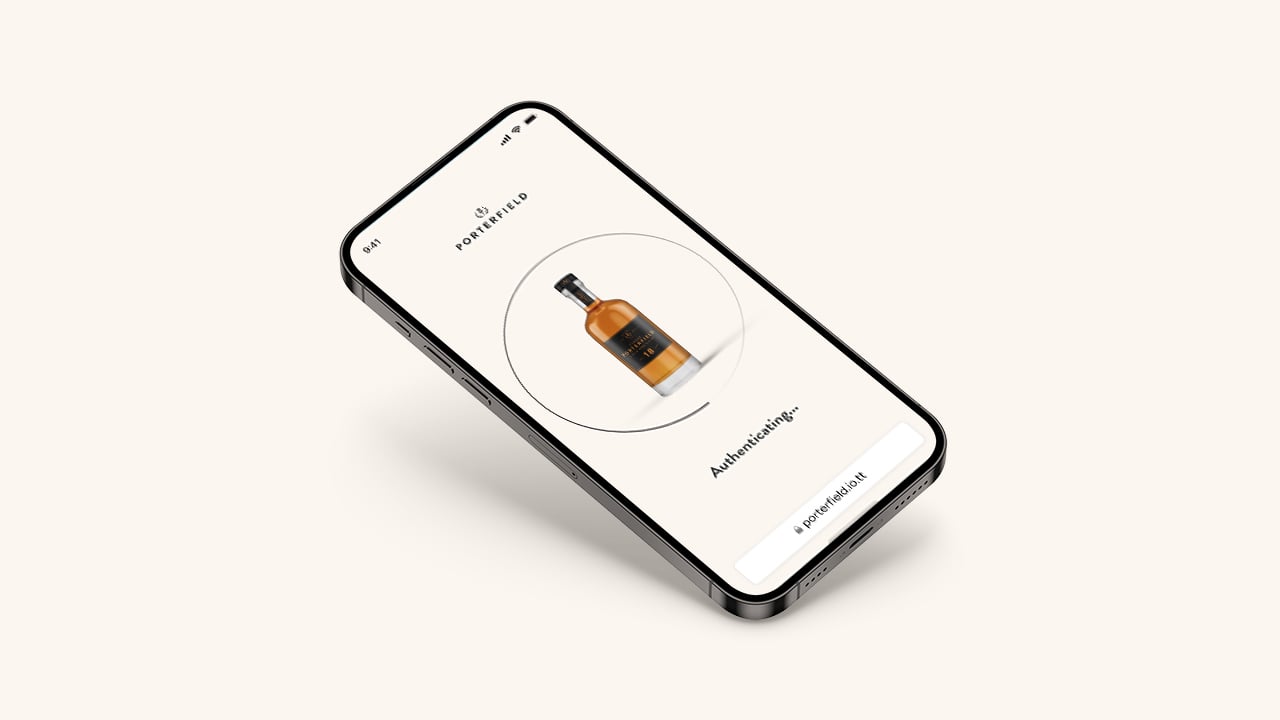




Fake Products. Real Consequences.
For a lot of people, the idea of a counterfeit is a poorly named, knock-off handbag or other designer item sold on market stalls. However, the modern counterfeit market is more sophisticated, dangerous, and costly to brands than many realise.
Counterfeiting is now a $1.7 trillion global industry, with every sector - from beauty to fashion to pharmaceuticals to alcohol - facing rising threats from fake goods entering the supply chain and reaching consumers.
But this isn’t just about lost revenue and damaged brand value - it’s increasingly a matter of public safety. Carcinogenic materials in clothing, unregulated chemicals in cosmetics, and toxic ingredients in alcohol – they’re putting brands on the front line of a growing health crisis. And the cost is significant.
The Cost of Counterfeiting
It doesn’t just undercut profits by taking sales from the brand - it undermines everything a brand stands for.
66% of consumers say they’d stop buying from a brand if they discovered they’d been sold a counterfeit version of its product.
79% say they expect brands themselves to do more to protect them from counterfeits.
Every counterfeit version of your product that is purchased is causing irreparable damage to your brand reputation and that damage increases in sectors where product safety is essential - such as pharmaceuticals or alcohol. Here is why fakes can pose a serious, or even fatal, risk to consumers.
Alcohol
Counterfeit alcohol isn’t just a diluted product with a fake label. It often contains methanol or isopropyl– chemicals that can cause blindness, coma or death, even in small doses – as they are cheaper than ethanol and often used in fakes.
These chemicals are hard to detect meaning consumers can drink fatal amounts whilst thinking they’re drinking safely, with often tragic results:
Earlier this year in Turkey, there were 103 recorded fatalities across Ankara and Istanbul due to counterfeit alcohol.
Between 2013-2020, there were 1,400 cases of methanol poisoning leading to more than 1,000 deaths in India due to counterfeit alcohol.
850,000 litres of alcoholic drinks were seized by the EU in 2024 alone.
Fashion
With fast fashion and reseller sites exploding over the last 5 years, fashion has a bigger issue with counterfeits than ever before. Along with the financial hit to brands, counterfeits in fashion have links to organised crime, unsafe factory conditions, and child labour.
On top of this, consumers who think they’re buying your products might be exposing themselves to dangerous materials such as arsenic, cadmium and lead – all of which cause long-term damage to your health.
The fashion industry loses around $50 billion per year to counterfeit products
Up to 30% of fashion purchases are counterfeits
Retailers lose $10.40 for every $100 of returned merchandise from counterfeits
Pharmaceuticals and Cosmetics
The average drug takes 10-15 years and over $1 billion to safely test and take to market - so it’s clear to see the dangers when it comes to counterfeit drugs that haven’t gone through the same strenuous processes.
Ozempic is a good case study of how an in-demand but hard to obtain drug can quickly produce a black market full of dangerous fakes, leading to many problems:
According to the World Health Organization, the counterfeit pharmaceutical industry is estimated to cost the global economy $200 billion annually.
Counterfeit medicines kill over 1 million people each year worldwide.
As much as 15% of the global medicines supply chain could, at any time, be counterfeit.
Electronics
Electronics is another market segment where counterfeits have become widespread, and the consequences of faulty parts can be significant.
Whether it’s hazardous materials on the devices, unsafe parts causing fires, or plugs being electric shock hazards – they’re all potential accidents waiting to happen that can erode trust in your brand whilst endangering lives, such as:
Counterfeit Apple chargers were found to have a 98–99% safety test failure rate - posing serious risks of fire, electric shock, and property damage.
Counterfeit electronics sales are worth $143 billion dollars globally every year.
It’s estimated that 1 in 10 electronic products sold worldwide are counterfeit
Authentication through Connected Products
With counterfeiters getting smarter, brands need to be smarter still. That’s where connected packaging and product tech comes in.
With connected product technology - like serialised QR codes and cryptographic NFC tags - brands can take back control and build authentication processes directly into the product, at scale.
These can be linked to cloud-based authentication flows that confirm a product’s legitimacy in real-time, right from the consumer’s smartphone. All you need to do this is find a connected product platform (like io.tt) that enables you to generate these IDs and start protecting your brand and consumers.
Whether it’s a medicine bottle, a lipstick or a bottle of wine, connected products offer:
On-pack verification: Consumers can scan to check authenticity instantly.
Supply chain traceability: Brands can track products across the full journey, from manufacture to sale.
Tamper detection: Secure identifiers can detect if a product has been opened or resealed.
Consumer trust: Verification flows that reflect your brand tone of voice, UX and loyalty strategy.
The Bottom Line
Counterfeits are costing brands billions - but the real cost is consumer trust, and brand reputation. And in sectors like pharma, cosmetics and alcohol, the stakes are far higher than revenue, it’s consumer safety.
io.tt makes it simple to add authentication to your packaging, products and processes. With scalable, connected tech and a no-code platform, we help brands fight counterfeits and strengthen consumer relationships at scale - find out more here.
